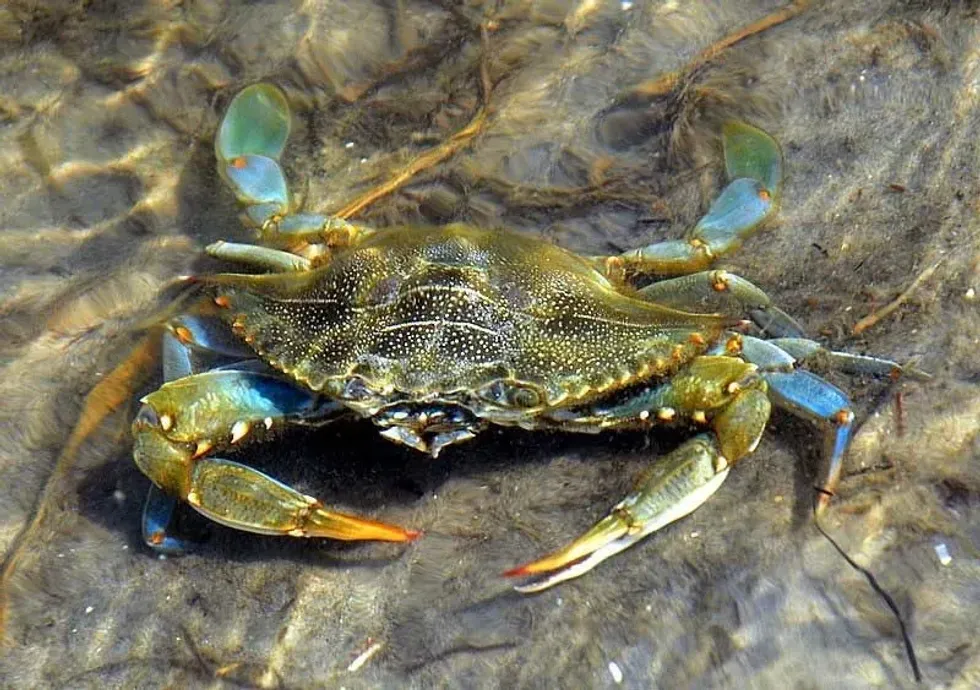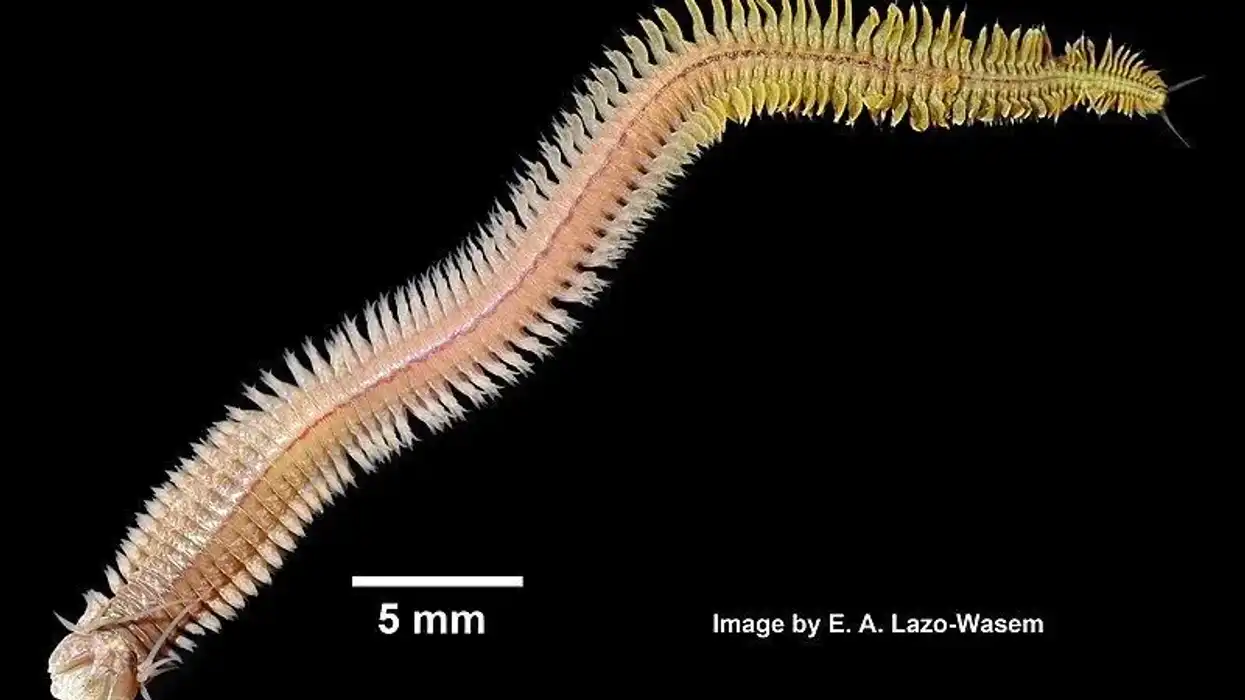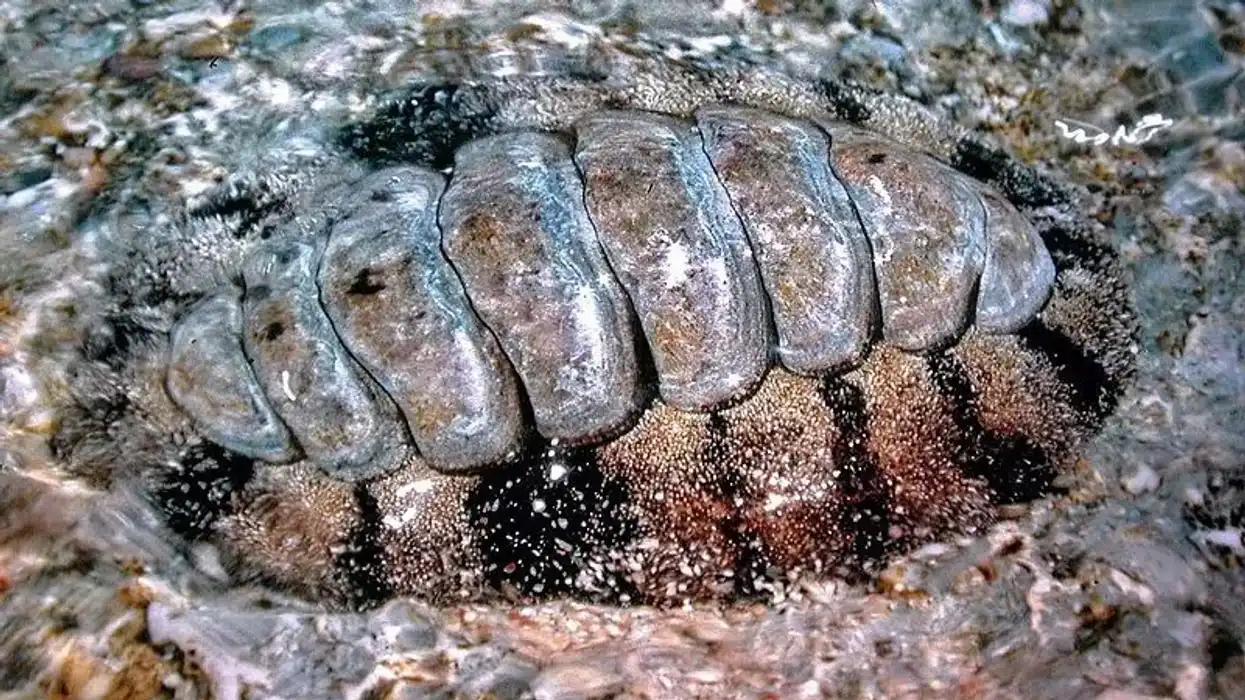Are you looking to discover a colorful marine animal? We bring you the star from the Chesapeake Bay, the Blue Crab. True to its name, the Blue Crab is sapphire-colored with a mottled brownish shell on the carapace.
Their scientific name is Callinectes sapidus. Their population is spread across the Atlantic Ocean's coastal regions to the Gulf of Mexico.
The States of Maryland, Virginia, North Carolina, and Louisiana contribute to Crab Fishing. These crabs are of commercial and recreational importance in their habitat's range. They are widely found in an estuarine environment.
The spawning season is from December to October. The young crabs are precocial; they gain independence right after birth as they are left to fend for themselves. They undergo multiple molting processes throughout their lives.
They are diurnal animals and scavengers of the seafloor's bottom-dwelling organisms. They are omnivorous, preying on dead fish, oysters, clams, plant materials, and insects. Read on to learn more about this Blue Crab.
If you like our extensive facts on the crab species here, you could explore more fun facts on the hermit crab and king crab.
Blue Crab Interesting Facts
What type of animal is a blue crab?
The Blue Crab is a species of crabs iconic to the Chesapeake Bay. Their scientific name gets translated as 'beautiful savory swimmer.' These crabs are a popular delicacy in their geographical range. They are also a sought-after catch in many fisheries in the States. They get their name for the bright blue hue on their claws which stands out.
What class of animal does a blue crab belong to?
They belong to the class Malacostraca. It contains the largest class of crustaceans under its category. This class's distinct features are six segments of the head, possessing antennae, and having compound eyes.
How many blue crabs are there in the world?
There is no distinct study on evaluating the world population of Blue Crab Callinectes sapidus. However, an independent study done by scientists from Maryland and Virginia has estimated 594 million of the Blue Crabs species were living in the Chesapeake Bay in the year 2019.
The adult female crab's population was estimated at 191 million in the Chesapeake Bay. The study showed a positive increase in the population trend of the Blue Crabs in the Chesapeake Bay. They also are found in abundance in the Gulf of Mexico.
Where does a blue crab live?
The Callinectes sapidus species are found in the Atlantic Ocean and Gulf of Mexico. Their geographic range extends from coastal regions of Nova Scotia to Argentina. These days they are also found on the European or Asian coast through artificial introduction.
The Blue Crabs are a lifeline for the Chesapeake Bay ecosystem. They have commercial and recreational viability in the Chesapeake Bay. The wide distribution of habitat ensures that these species are not rare.
What is a blue crab's habitat?
The Blue Crab habitats are predominantly estuaries. Their habitat preference is tropical to temperate and freshwater to Saltwater estuaries. The species' males are inclined towards freshwater, and the female Blue Crabs prefer saltwater surroundings.
Being bottom-dwellers in the sea, the Blue Crabs can be seen around the oyster reefs and underwater grasses. During summer, their populations surge in shallow waters, and during winters, they plunge downwards and prefer deeper parts of waters.
Who do blue crabs live with?
They are predominantly solitary. These animals compete for space and food with other bottom dwellers in their habitat.
How long does a blue crab live?
The average lifespan of the Blue Crab is one to three years. Human threats by overfishing, pollution, and habitat loss are a threat to their lives' longevity. These crab populations are also susceptible to various ailments and parasites.
How do they reproduce?
The Callinectes sapidus reproduce through internal fertilization. At the final molt stage, the females release pheromones to attract the males. The male will compete for the females, and Blue Crabs mate during the females' soft shell stage. Mating can last for 5-12 hours. Males can choose multiple mating partners, unlike females.
The females fertilize the eggs with the stored sperm and pass the fertilized eggs to the apron in her abdomen. The females can store the sperm up to nine months after they mate.
The incubation period lasts for 17 days, after which the females deposit the larvae into the highly saline water in the mouth of estuaries. The larvae grow into adults in two months after eight stages of molt. The Blue crabs attain reproductive maturity age between 12-18 months.
What is their conservation status?
As per the IUCN classification, these crabs are under the Not Evaluated category. There is no substantial study to evaluate the trend in their population worldwide.
However, there is an exclusive Chesapeake Bay Program that vows to protect these endemic species of Blue Crabs in their waters. Maryland, Virginia, and the Potomac River Fisheries Commission (PRFC) jurisdiction is managed by Chesapeake Bay Program to control commercial crabbing in this region. They aim to attain a healthy population count of these animals in the ecosystem.
Blue Crab Fun Facts
What do blue crabs look like?
The Blue Crab Callinectes sapidus has a bright blue frontal zone along the chelipeds (pincher claws), and their body is mottled brownish at the carapace. The females have red-tipped claws.
The flippers are paddle-shaped, assisting in swimming. The Blue Crabs have four frontal teeth. The blue pigment alpha-crustacyanin and the red pigment astaxanthin are primarily responsible for the color of the Blue Crab, and hence they are called Blue Crabs.
How cute are they?
Their sapphire-colored claws and the shiny metallic body clubbed with their agility makes them an attractive sea animal.
How do they communicate?
The Blue Crabs use visual and chemical cues to communicate with one another. Being aggressive and scavengers in nature, visual communication can help evaluate mates from a more significant distance. The males show attraction towards females having red claws.
How big is a blue crab?
The Blue Crabs grow up to nine inches in size. They are half the largest crab, called the Tasmanian giant crab, which can grow up to 18 in.
How fast can a blue crab run?
The Blue Crabs with six walking legs and two flippers are highly mobile. They can cover a distance of 215 m in a day. They move at an average speed of 15.5 meters per hour. The maximum speed attained is 140 meters per hour.
How much does a blue crab weigh?
The Blue Crab is one of the lighter crabs in the crab species as they weigh a maximum of 2 lb. The crab species' heaviest is the Japanese spider crab that weighs an enormous size of 44 lb.
What are their male and female names of the species?
The adult male Blue Crab is referred to as Jimmy crabs, the female as Sally crabs. Mature adult females are called Sooks. While carrying the egg in its womb, the female is referred to as a 'sponge crab.'
The male blue crabs are more significant than the female. They depict sexual dimorphism, meaning there is a clear distinction between males and females. The apron or the male's abdomen is T-shaped, and the abdomen of the female is shaped like a 'U.'
What would you call a baby blue crab?
The baby crab is called Zoea in its larval stage. They undergo a series of molt or shedding (up to 20 times) to reach the adult stage.
What do they eat?
They are omnivores animals feeding on various plants and animals surrounding them. Their diet includes dead fish, oysters, clams, plant materials, insects, and mussels. They are predated by larger fishes, fish-eating birds, and sea turtles. Being opportunistic feeders, they are among the largest consumers of bottom-dwelling organisms.
Are they aggressive?
These bottom-dwelling swimmer crabs are highly aggressive and territorial. They are quick on their feet and use their pincher claws to attack any threat near them.
However, they do not pose any threat or danger to humans, as they would hide away at any approach from humans. They are in a vulnerable situation fresh after a molt, in the soft shell state.
Would they make a good pet?
Due to their aggressive and hostile nature, they need to be housed separately. If kept with other fishes, it is sure to gobble them all up. They will eat away anything in their surrounding, from plants to fishes. They will make an excellent pet to only those committed to providing them an abode as close to their natural habitat.
Did you know...
The Maryland Blue Crab is very popular among food enthusiasts for its buttery and delicate texture. The Blue Crab meat is white and succulent and has a salty-sweet taste. The Blue Crab season lasts from April to the end of November.
The female Blue Crab mates only once in her lifetime.
The Blue crabs can regrow a lost limb.
The Blue crabs hibernate in winter by burying in mud and only come out during spring.
One-third of the Blue Crab catch comes from the Chesapeake Bay fisheries.
How many legs do blue crabs have?
Like the Blue King Crab and the Blue land Crab, the Atlantic Blue Crab legs are 10 in number. Their hind legs are like paddles, making Blue Crabs excellent swimmers.
These decapods' legs come in pairs of pinchers in front, six legs in the middle, and a pair of flippers at the end. Pinchers are self-protection tools for these crabs.
What are some other names for blue crabs?
The Blue Crabs also go by other names like Atlantic Blue Crab, Chesapeake Blue Crab, or the Blue Shelled Crab. These Blue Crab's meat offers a taste extravaganza to the food enthusiasts.
These crabs are cooked in myriad ways, and the taste offered varies accordingly. This Blue Crab can be boiled as a whole, and the meat is eaten with an accompaniment of sauces. Another way is to shred the meat and put it into salads, casseroles, or chowders. They can be grilled, fried, and put into sandwiches too.
Here at Kidadl, we have carefully created lots of interesting family-friendly animal facts for everyone to discover! Learn more about some other arthropods, including Sally Lightfoot crab or Dungeness crab.
You can even occupy yourself at home by drawing one on our Blue Crab coloring pages.










